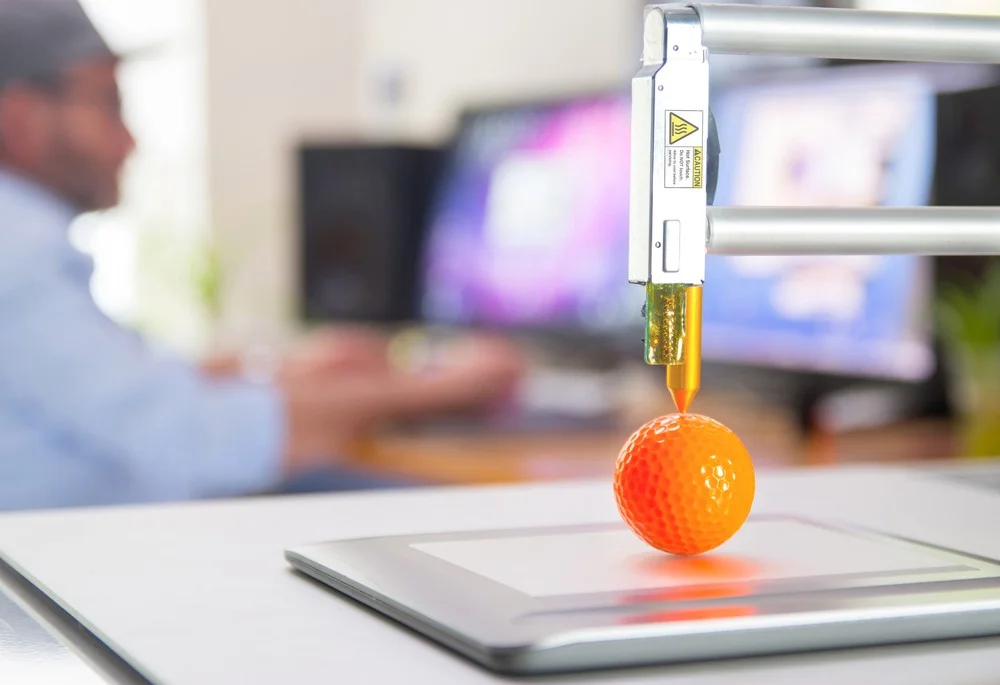Blockchain Will Turn The Supply Chain Into A Demand Chain. Here’s Why
If you want to know how future innovations will alter the supply chain, you may be asking the wrong question.
The coming changes won’t just tweak the supply chain, they’ll transform it completely.
Let’s say an aerospace company needs to manufacture a fan blade for one of their jet engines in Dubai. In the future, they’ll pay for the design files, send them to an autonomous machine on site, and wait as the parts are manufactured right where they’re needed.
No ordering. No shipping. And very little room for fraud.
It will be a massive shift from the traditional supply chain to a new system — the demand chain.
Demand chains are a radical departure from the status quo, shaping a possible future in which production is localized and immediate, and companies no longer rely on centralized manufacturers to create products.
The idea might seem far-fetched when you first hear it, but it’s very plausible once you understand what it looks like. And it’s already beginning to take form.
Here’s why technology is moving us away from a supply-driven society:
Current manufacturing systems are in need of a fraud solution.
Companies spend tens, and even hundreds, of millions of dollars on research and development every year in order to perfect design files.
Patents protect certain replication and data, but the truth is, blueprints still leak. More importantly, the metadata in those blueprints leaks. Within that metadata are the instructions that tell a machine what to do in order to actually make the product.
And when it comes to additive manufacturing — the process of building a product one layer of material at a time — that metadata can be incredibly valuable.
If blockchain tech were to be used for additive manufacturing, smart contracts could create a direct relationship between the company and the machine building the part, as opposed to a relationship that involves a manufacturer who might then copy or sell that data.
That direct link increases the security of IP and eliminates a lot of the problems in the hardware industry regarding counterfeit products and diversion.
But those wouldn’t be the only effects. The use of blockchain technologywould also push us closer to establishing a demand chain.
Additive manufacturing on the blockchain will eliminate the need for a centralized manufacturer.
In the future, more machines run on the blockchain will be producing goods autonomously. So the quality of the manufactured items can be quickly maintained across those machines — whether you’re using one or 100.
When a company has a direct link to the machines that create its products, there’s little reason to have them all centralized at one location, which then entails shipping the goods around the globe.
This means that parts — like a jet fan blade, for example — can be made locally when they’re needed.
Instead of going through the complex process of ordering, waiting for shipping, and tracking deliveries, companies can get their products on demand.
And once that starts to become a reality for more companies, entire industries will begin to transition away from the current norm of a supply chain.
A blockchain-based system will open up entirely new perspectives, opportunities, and challenges for companies.
There are still plenty of questions to be answered about the demand chain, but the basics are already in place.
In one scenario, the machines doing the work will be fractionally owned by the companies using them. Each company participates in the network and trusts the decentralized OME instead of using another company to do their manufacturing.
Rather than the massive factories pumping out clothing that may or may not even end up being bought, clothing and other goods could be manufactured on demand at local hubs.
Imagine a Bloomingdales, but without the huge inventory on site. Instead, customers walk in, choose the brand and piece of clothing they’d like, and then briefly wait as a 3D garment machine crafts the item using the design files from Nike, J. Crew, Levis, or whichever brand the customer chooses.
In this case, companies don’t have to worry about creating excess inventory — or running short when they misread demand. They also don’t have to concern themselves with the leakage of proprietary information, or the running of illegal “third-shifts” at their manufacturer’s facilities.
It’s a more sustainable and system that can save us massive amounts of raw materials and energy, and it’s a lot closer to becoming a reality than many may think.
Thanks for reading!
Follow me on Twitter and Quora for more insights on blockchain technology.

